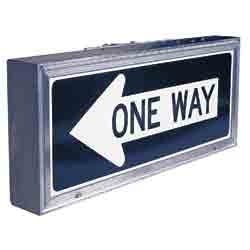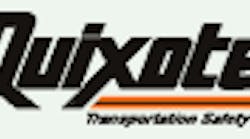Quixote Traffic Corp. Inc., through its NuArt Lighting Products division, now offers street and highway backlit signs that use induction lamp technology that increases life expectancy to an unprecedented 120,000 hours—more than 27 years.
The NuArt induction lamp technology (patent pending) provides the same vibrant light output as fluorescent with instant on-and-off performance that operates down to -40 degrees F, but does not use a filament that can fail. Therefore, it has 120,000-hour life expectancy. Existing signs can be retrofitted with the induction lamp technology as well.
Induction lamps use an induction coil or energy-coupling antenna without electrodes that discharge gas at low pressure. The center of the lamp is the induction coil powered by an electronic unit at the base of the lamp, while a glass assembly surrounding the induction coil contains an electron-ion plasma material and is filled with inert gas. The inner portion of the glass is fired with a phosphor coating, which is similar to that in fluorescent lamps. The antenna transmits energy generated by the primary coil of an induction system to the gas-filled chamber where it creates ultraviolet radiation and is then converted into lighting sources by the fluorescent powder on the glass surface.
The result is a bright white light with instant (less than 1/2 second) on-and-off performance.
“There are numerous benefits to state and municipal agencies that adopt induction lamp technology for their backlit signs,” explained Clynn Mann, national sales manager for NuArt Lighting. “In addition to the obvious benefits in cost, labor and maintenance due to the technology’s incredible life expectancy, induction lamp technology is a sophisticated operation which means no flickering or strobing effect or noise. This also makes for a more visible sign which is beneficial to motorists and pedestrians alike.
NuArt backlit induction lamp signs are highly reliable and virtually maintenance free. They have a phosphor cover for pure white light and no color deviation, and provide a restful, non-fatiguing-to-the-eye light which also is beneficial to the motorist and pedestrian. This is ideal where good color recognition is important: multi-color city seals; at pedestrian crosswalks for enhanced visibility; on multi-lane roads where better visibility will allow motorists to make lane changes earlier; and for backlighting international symbols.
Related Content
Related Content

